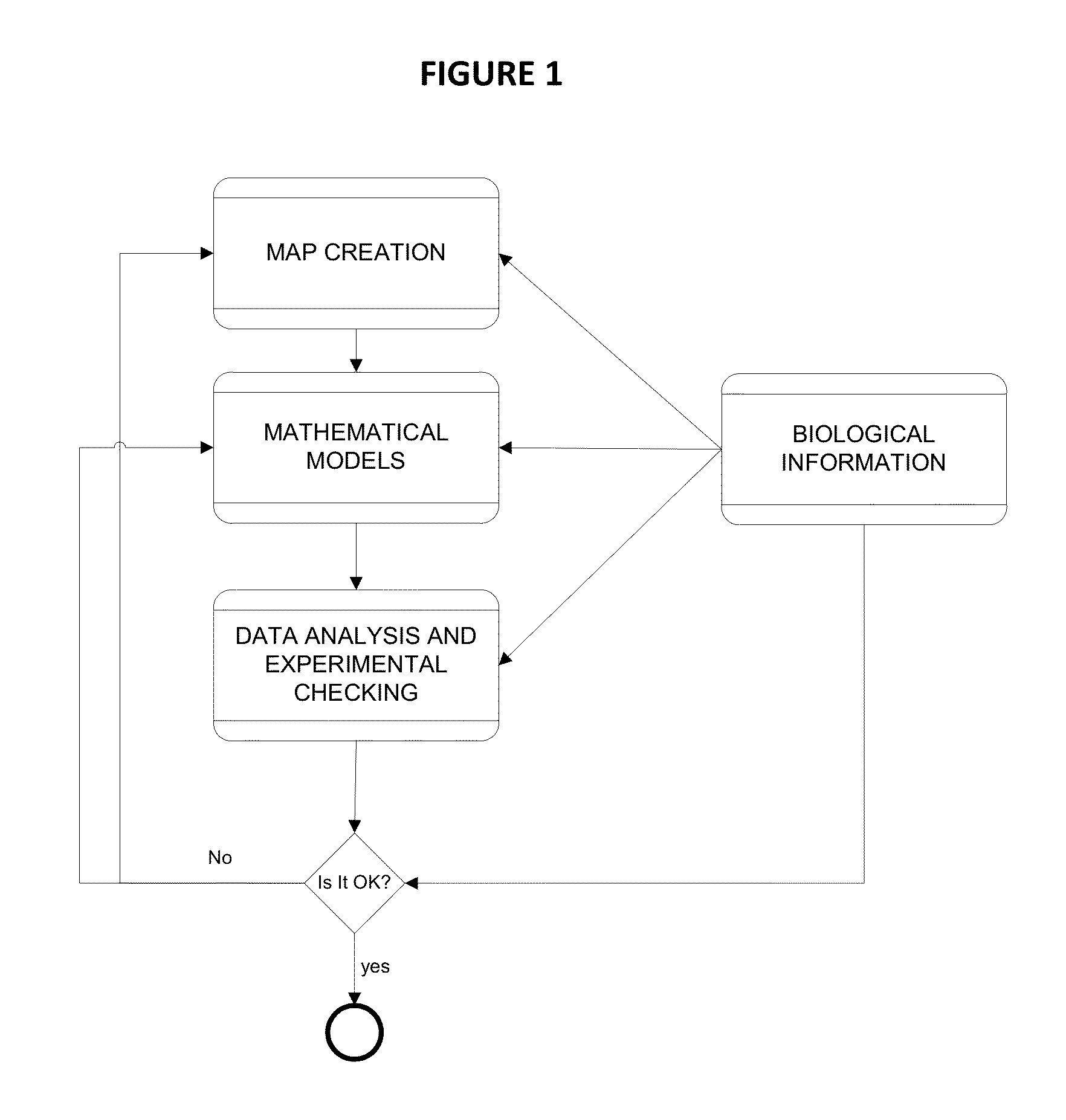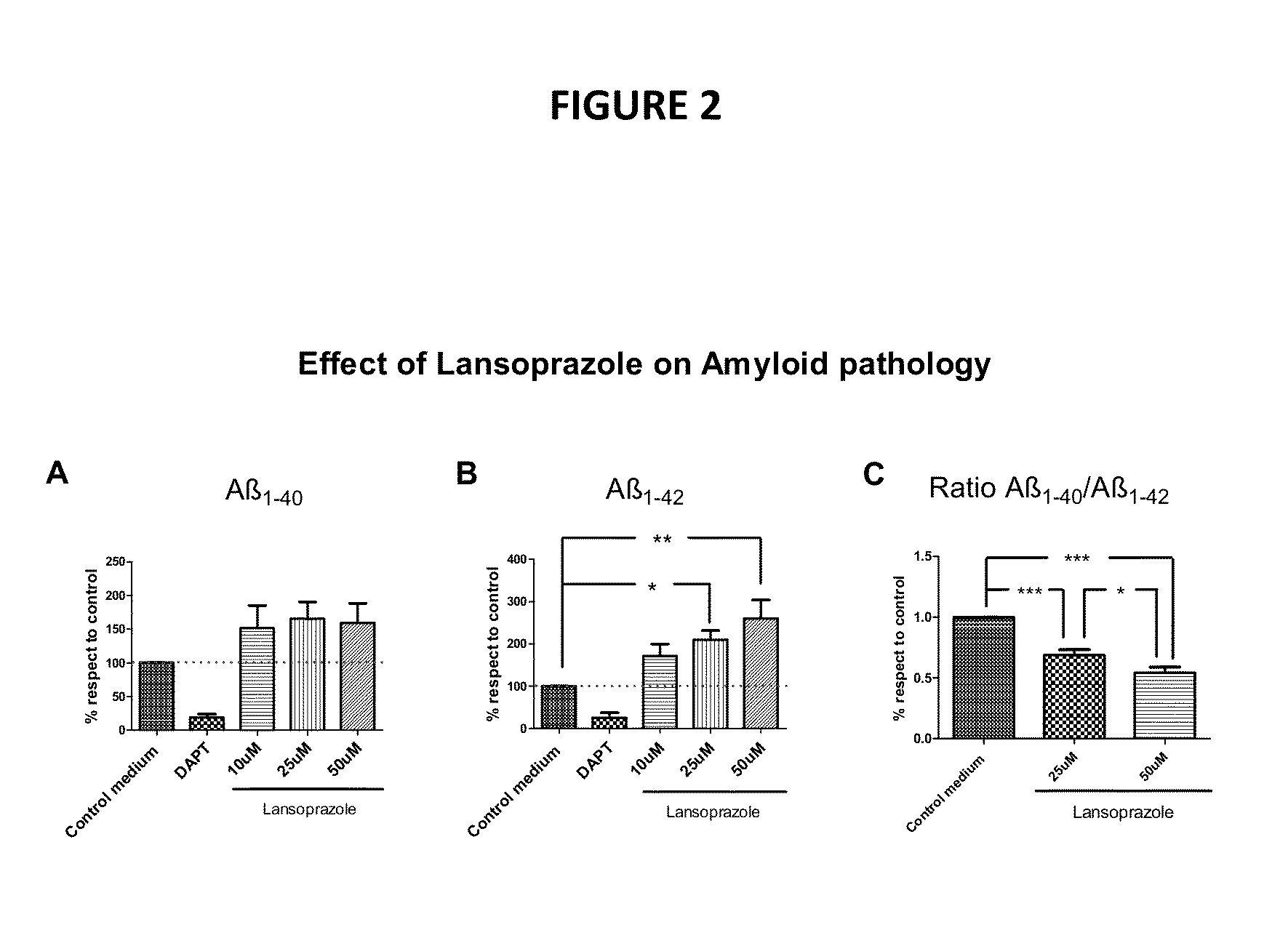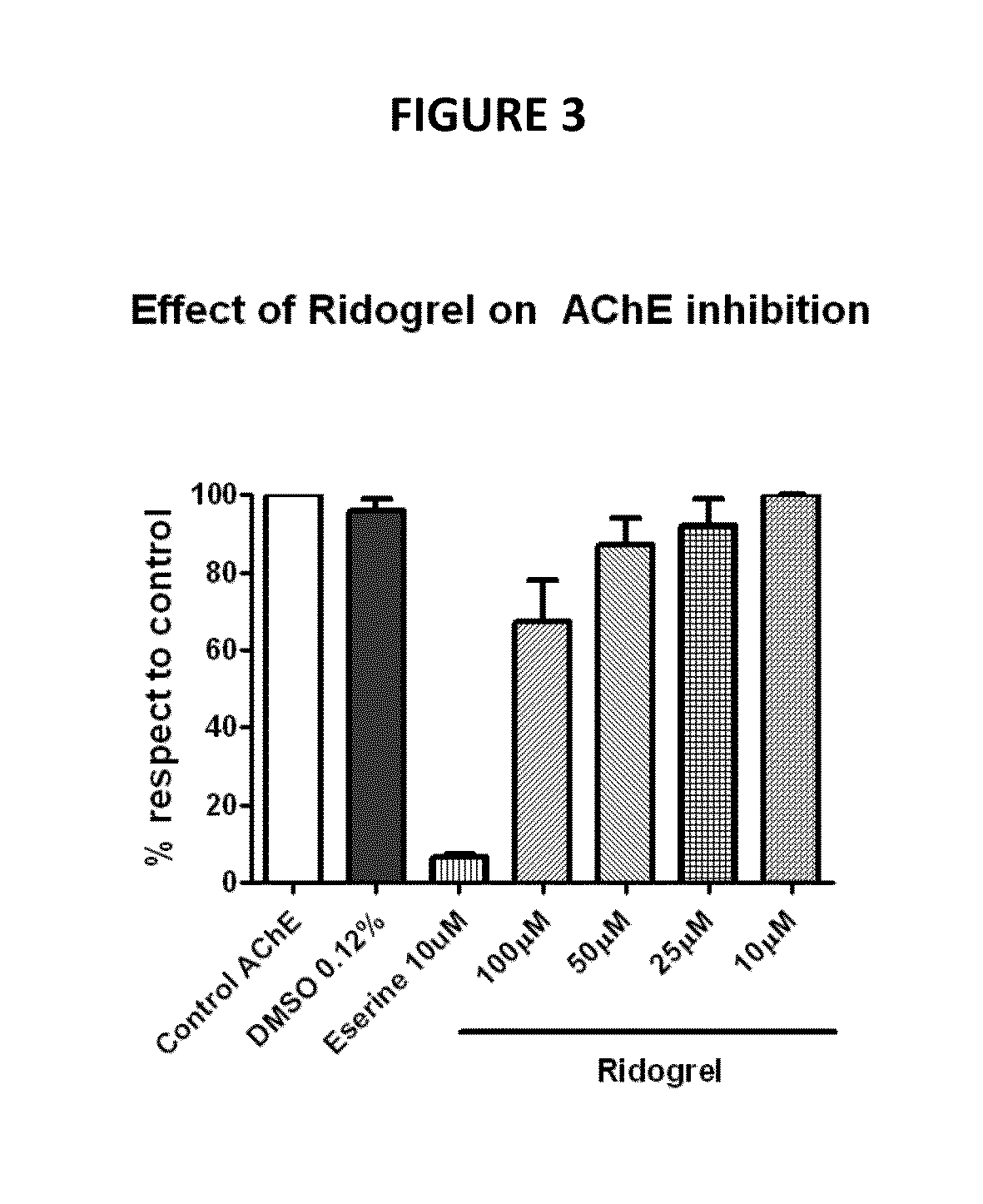Combination therapies for treating neurological disorders
a neurological disorder and therapy technology, applied in the field of neurological disorders, can solve the problems of inability to develop disease-modifying therapies, increased prevalence, and treatment needs,
- Summary
- Abstract
- Description
- Claims
- Application Information
AI Technical Summary
Benefits of technology
Problems solved by technology
Method used
Image
Examples
example 1
[0107]Alzheimer's disease (AD) was characterized in four pathophysiological motives; Amyloid pathology, Tau pathology, Oxidative Stress and Neuronal dysfunction and death at protein level. The key proteins of each motive are identified and used as seed nodes to construct the Alzheimer's disease Map. A mathematical model was developed to mechanistically reproduce the behavior of the biological map, and to be able to generalize to new predictions.
[0108]A final group of drug combinations was obtained. High TPMS scores obtained by drug combinations with high individual prediction degree (prediction value equal or higher than 0.02), and high additive or synergistic degree by the highest single agent (HAS) model, were obtained for any combinations of at least two compounds as described in TABLE 1. Each of the drugs showed a specific score for each one of the four pathophysiological mechanisms or motives of neurodegenerative diseases described above: Amyloid pathology, Tau pathology, Oxida...
example 2
[0109]Particularly high prediction and synergism values were obtained for the combination of two or more among riluzol, bepridil, diazoxide, thiamine, methylsergide, minaprine, alendronate, miconazole, melatonin, docetaxel, tamibarotene, ridogrel, milnacipran and diminazene aceturate (Table 2).
TABLE 2Drug combinations with high TPMS score. TPMS scoreobtained by high prediction degree, prediction value equal or higher than 0.02 and high synergism degree.CombinationsPredictedDrug ADrug BCombinationDrug ADrug BSynergismRiluzoleBepridil0.160.080.06+RiluzoleDiazoxide0.140.080.02+ThiamineRiluzole0.120.040.08+MethysergideRiluzole0.120.040.08+AlendronateFelodipine0.100.040.06+AlendronateBepridil0.100.040.06+AlendronateMiconazole0.100.040.08+AlendronateMelatonin0.100.040.08+AlendronateDocetaxel0.080.040.04+AlendronateTamibarotene0.080.040.04+BepridilTamibarotene0.080.060.04+RiluzoleMinaprine0.120.080.04+RiluzoleMinaprine0.120.080.04+DocetaxelDiminazene0.220.180.14+RidogrelMilnacipran0.060.02...
example 3
[0110]As per example combination of bepridil, a calcium channel blocker used to treat angina, with riluzole, a glutamate antagonist used as anticonvulsant and used to prolong the survival of patients with amyotrophic lateral sclerosis, has shown a hit rate of 98% and an prediction value of 0.16, which means a possibility of 84.81% to correctly predict its indication on AD pathology. Synergy between bepridil and riluzole has been predicted.
[0111]Therefore, the efficacy of the drug combination on memory was studied in a mice model of Alzheimer's disease (3×Tg-AD) overexpressing human PS1M146V, tauP301L, APPSWE [16] using spatial reference learning and memory testing (Morris water maze test (MWM test)). Two groups of female 3×Tg-AD mice were administered bepridil+riluzole (n=14) or vehicle (n=11) starting at 4 months of age during 10 consecutive weeks. A group of age and gender-matched non-transgenic littermate controls (wild-type) received vehicle (n=11) on a similar timetable schedul...
PUM
| Property | Measurement | Unit |
|---|---|---|
| time | aaaaa | aaaaa |
| ratio of time | aaaaa | aaaaa |
| width | aaaaa | aaaaa |
Abstract
Description
Claims
Application Information
 Login to View More
Login to View More - R&D
- Intellectual Property
- Life Sciences
- Materials
- Tech Scout
- Unparalleled Data Quality
- Higher Quality Content
- 60% Fewer Hallucinations
Browse by: Latest US Patents, China's latest patents, Technical Efficacy Thesaurus, Application Domain, Technology Topic, Popular Technical Reports.
© 2025 PatSnap. All rights reserved.Legal|Privacy policy|Modern Slavery Act Transparency Statement|Sitemap|About US| Contact US: help@patsnap.com



